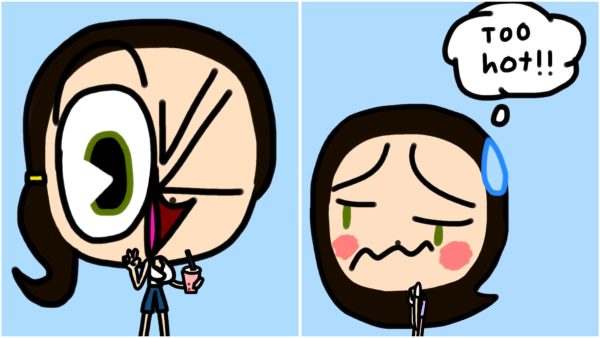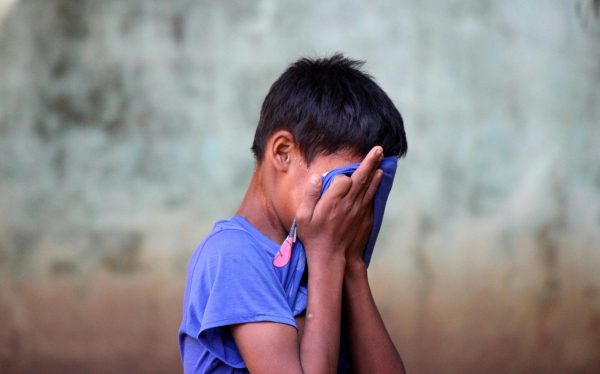Teen Suicide a Serious Topic
Third-Leading Cuase of Death Among Teens Needs Closer Inspection
Robyn Nixon took her life at age 15 by jumping off a car park in Weymouth, Dorset on April 11. Robyn’s mother said she was psychologically bullied and had been dealing with depression. Nothing was done to help Robyn, even though two of her friends knew she had been considering suicide. Seeing her ex-boyfriend with a new girl helped finalize her decision. Maybe if her school had a program to help students like her, Robyn could have been saved.
Suicide is the third-leading cause of death among teenagers. There are numerous stop-suicide and anti-bully messages and warnings. Students in schools are warned to look out for fellow students who may be suffering from a mental illness and considering suicide.With all of this information readily available, why exactly are so many teens choosing to end their lives early? Could poor mental health care availability to minors be a cause?
It’s easy to get medical attention at hospitals when you’re sick or have a broken bone, but this is not true for the 20% of young people between the ages of 9 and 17 who seek help for mental illness. Teenagers who are suicidal have a better chance of living if they receive help early on. “Referrals can be made for treatment, and effective treatment can be employed when signs are observed in time. Intervention efforts for at-risk youth can put them in contact with mental health services that can save their lives,” reports the American Psychological Association. Hospitals pay less attention when someone comes to them for mental health reasons; their primary focus is people with physical injuries.
Virginia Senator R. Creigh Deed’s son, Austin, stabbed his father and then shot himself on Tuesday, November 19, according to The Washington Post. Before any of this took place, Austin Deeds had been evaluated by a local hospital under emergency custody the day before the incident, and it was concluded that he needed to be hospitalized. The reason he wasn’t hospitalized, according to The Washington Post, is that no beds were available. As a result, they sent Austin Deeds home, and it is unclear why he attempted to kill his father before taking his own life.
While this situation is extreme in that it resulted in violence and death, it gives credence to the argument that more needs to be done for people with mental health issues –- especially those who seek help. In Virginia, this situation has caused people to more closely examine and rethink Virginia’s health-care system. “The attack on the senator brought new scrutiny to Virginia’s mental-health system. Six years after the Virginia Tech massacre, which prompted an outpouring of attention and dollars for state mental-health care, advocates still say the system is starved for money and reform,” reports the Washington Post’s Paul Schwartzman.
For teens, the issue is very serious. Emergency hotlines, websites and church ministries are open to helping suicidal teens, but what about the teens who will not talk about their thoughts or feelings with someone? These struggling young people think they can handle it on their own or don’t want to burden people with their problems. The American Psychological Association has been doing research on teen suicide prevention in the hope of getting to at- risk teens before it’s too late. “National suicide- prevention efforts have focused on school education programs, crisis center hotlines, screening programs that seek to identify at-risk adolescents, and media guidelines,” reports the Association.
Teenage years tend to be a time when emotions are intensified and the world seems against you at times. Suicidal teens need to know that someone will be there for them when they need help. A recent study group has shown intervention groups for teens can reduce mental health risk by at least 30%. “Our study shows that teacher-delivered interventions that target specific risk factors for mental health problems can be immensely effective at reducing the incidence of depression, anxiety and conduct disorders in the long term,” reports Dr. Patricia Conrad, who hopes to input therapy groups in schools for students.
A way to help teens at risk for suicide or mental illness is to teach them how to handle their emotions. Research by Dr. Conrad has shown that teens who receive emotional-intelligence training have an overall improved feeling of well-being and are able to handle stress better. According to Gary Low of the School Superintendents Association, one place that has not done well for young people who are struggling is schools. “Schools have not done well preparing students for life with things such as emotional-intelligence training; schools often don’t help students learn to cope with fears, stresses, relationships and other areas of life,” says Gary Low who feels that school programs and mental-health care for teenagers need to be improved.
Teens with mental illness or risk for suicide shouldn’t have to struggle to get help. One way schools could help is by administering screening tests in schools to check students for depression, anxiety or any type of mental illness should take place. Background checks for a family history of mental illness. Overall, mental-health care in the United States needs to be more accessible to minors in order to make sure they get the help they need before it is too late.










































